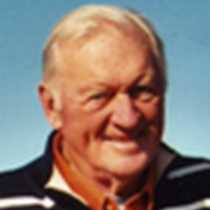Prince Rupert, British Columbia, Canada
This hillside community is a western terminus of rich aboriginal cultures, especially those of the Tsmishian, Nisga’a and Haida peoples. Ten thousands years later – give or take a few thousand years – Prince Rupert became the end of the line for the Canadian National Railroad. The North Pacific fishing industry claimed the town as its Canadian port. The nearby Skeena River gave the village a reason to grow. Prince Rupert’s docks and harbors (above) brim with vessels of every description. Nearby warehouses, restaurants, museums and lodging have edged the town into a welcoming center for visitors.
Sea Lion guests disembarked this morning and motored uphill to the new Museum of Northern British Columbia. Docents escorted guests to exhibits of First Nation artifacts and art, including a rare Tlingit Blanket and Haida carvings of argillite (an ancient blue-black shale). The Museum overlooks the harbor and a verdant park, with the Tsmishian island of Old Metlakatla in the distance (new Metlakatla, on Annette Island, is near Ketchikan, Alaska). Following a stop by the gift shop holding an exciting range of First Nation objects, the guests walked two blocks to the Longhouse. Within that high-roofed cedar building guests listened to an elder tell one of the colorful Raven stories. The entertainment ended with the taste of a local delicacy and the gift of a small wooden paddle for each listener. Most Sea Lion guests and staff returned to the Museum, passing an ancient petroglyph en route that seemed to be idly placed next to a city street (or had it been there for centuries?).
Guests then moved through Prince Rupert at will, eventually meandering downhill to Cow Bay. This picturesque cove was allegedly named for a skow attempting to transport cattle but suddenly and inconveniently began to sink. Its bovine passengers swam ashore. Old timers never forgot the incident and the name was indelibly placed on the harbor. Cow Bay also boasts brightly painted wood frame buildings, many of which house original gift shops, a coffeehouse called (what else?) Cowpuccino’s, and boats galore (pictured above).
In the afternoon, after cruising several hours south on the Inside Passage, the Sea Lion dropped anchor in Kumealon Inlet. This pause was used to take guests on narrated Zodiac explorations of wooded islands just south of the United States-Canadian border.
This hillside community is a western terminus of rich aboriginal cultures, especially those of the Tsmishian, Nisga’a and Haida peoples. Ten thousands years later – give or take a few thousand years – Prince Rupert became the end of the line for the Canadian National Railroad. The North Pacific fishing industry claimed the town as its Canadian port. The nearby Skeena River gave the village a reason to grow. Prince Rupert’s docks and harbors (above) brim with vessels of every description. Nearby warehouses, restaurants, museums and lodging have edged the town into a welcoming center for visitors.
Sea Lion guests disembarked this morning and motored uphill to the new Museum of Northern British Columbia. Docents escorted guests to exhibits of First Nation artifacts and art, including a rare Tlingit Blanket and Haida carvings of argillite (an ancient blue-black shale). The Museum overlooks the harbor and a verdant park, with the Tsmishian island of Old Metlakatla in the distance (new Metlakatla, on Annette Island, is near Ketchikan, Alaska). Following a stop by the gift shop holding an exciting range of First Nation objects, the guests walked two blocks to the Longhouse. Within that high-roofed cedar building guests listened to an elder tell one of the colorful Raven stories. The entertainment ended with the taste of a local delicacy and the gift of a small wooden paddle for each listener. Most Sea Lion guests and staff returned to the Museum, passing an ancient petroglyph en route that seemed to be idly placed next to a city street (or had it been there for centuries?).
Guests then moved through Prince Rupert at will, eventually meandering downhill to Cow Bay. This picturesque cove was allegedly named for a skow attempting to transport cattle but suddenly and inconveniently began to sink. Its bovine passengers swam ashore. Old timers never forgot the incident and the name was indelibly placed on the harbor. Cow Bay also boasts brightly painted wood frame buildings, many of which house original gift shops, a coffeehouse called (what else?) Cowpuccino’s, and boats galore (pictured above).
In the afternoon, after cruising several hours south on the Inside Passage, the Sea Lion dropped anchor in Kumealon Inlet. This pause was used to take guests on narrated Zodiac explorations of wooded islands just south of the United States-Canadian border.




